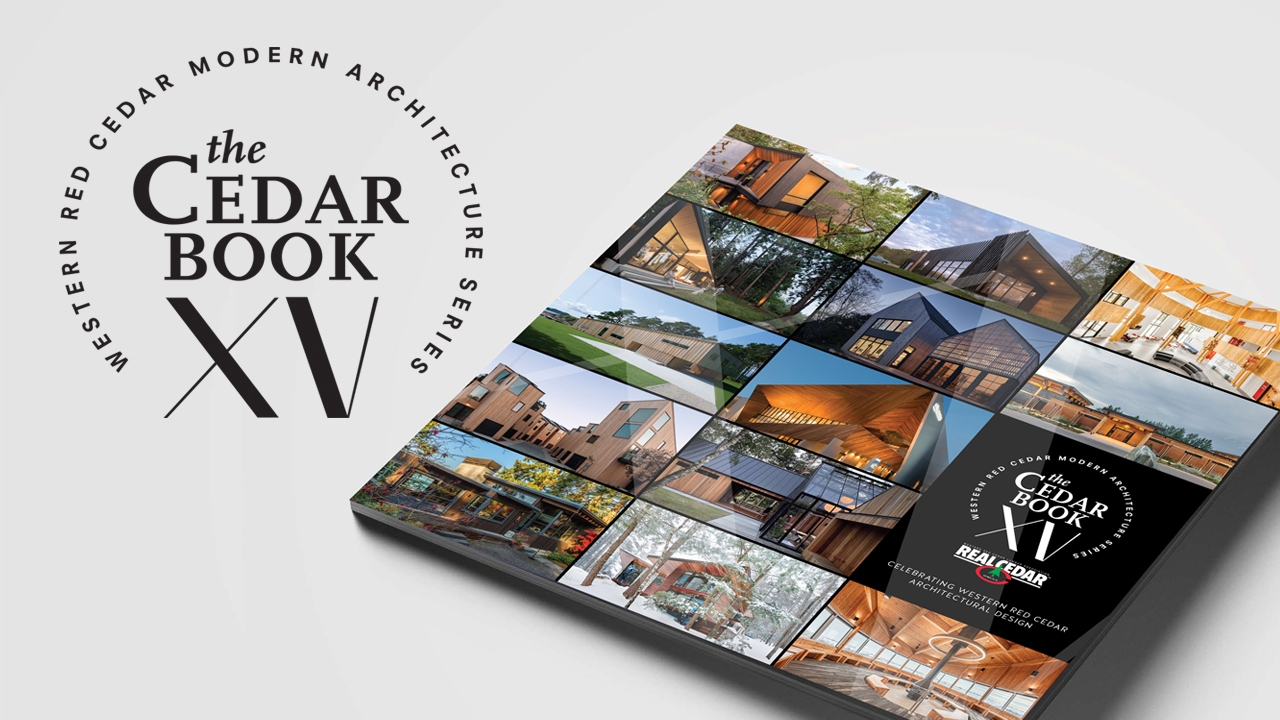Back
Back
Back
Back
Back
Back
Back
Back
Back
Back
USA & Canada
Best Books About Sustainable Architecture

Sign up now for our DIY Project Newsletter
Looking for One of the Best Books About Sustainable Architecture? Add Cedar Book XV to your reading list.
In need of some wood design inspiration? The 15th edition of the Cedar Book is now available in hard copy by request and in digital format. See how some of the most innovative architects are taking sustainable architecture to the next level. This must-read is more than just a photo gallery. The book serves as a great educational tool for architects looking for the latest techniques in green building.
While each of the 13 projects featured in the book are truly unique, they all have one thing in common. And that is extensive use of carbon sequestering building materials, specifically beautiful Western Red Cedar. That’s because woods, such as Real Cedar, capture and store carbon – as opposed to manmade materials that emit carbon. So it’s a choice they can feel good about.
The Cedar Book is also a great resource for the consultation process. Whether you keep the coffee table book on hand at your firm’s studio or bookmark a tab for it, you and your client can peruse the pages for ideas as you develop and refine the design brief. The book also illustrates how incredibly versatile Real Cedar is, with a plethora of patterns, textures, grades to choose from. Real Cedar is also pitch and resin free, so it holds a wide range of finishes.
Projects that Inspire Sustainable Architecture
From a modern multi-housing development built around an eco-sensitive lagoon to a cabin that harmonizes site to structure to a community-lead project that’s both culturally and environmentally safe, Real Cedar was key to achieving the desired look and design objectives.
Some architects specified Real Cedar siding and mass timber products for their performance properties.Other architects selected Real Cedar paneling to blur the lines between inside and outside. They also incorporated cedar inside to promote well-being for occupants. It’s called biophilic design. This scientifically proven concept states that introducing elements of nature, such as cedar products, creates peaceful, stress-reducing spaces.
And other architects used Real Cedar inside and out. Take Christopher Wright, for example. He wrote the foreword for Volume 15 of the Cedar Book, where he delves into why he loves working with nature’s most beautiful and versatile building material.
“Cedar has a rich experiential quality that contributes to the atmosphere of beauty and natural presence I seek to create,” explains the award-winning architect. “It is a friendly and flexible material that suggests warmth and a connection to nature. It has a tactile quality, smells good, provides excellent acoustics, and has a particular psychological effect on us – a calming and restful effect. Being surrounded by cedar makes us feel good.”
To digitally view or order a free hardy copy of Cedar Book XV, click here.
© 2025 All rights reserved
Gatsby Website Development by Jambaree
